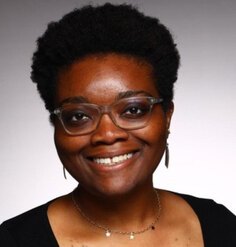5 Questions with Peter Hummel
November 24, 2014
Peter Hummel, FASLA is a Principal Landscape Architect at Anchor QEA in Seattle. He has over 30 years of experience focused on designing shoreline projects that serve people and benefit the environment. He thrives in an interdisciplinary setting and appreciates the contributions of environmental planners, scientists, engineers, landscape architects, and other professionals.
What are you drawing inspiration from right now?
In terms of projects, I’m inspired by Millennium Park in Chicago, the water cleansing urban spaces that Kongjian Yu’s firm Turenscape has designed in China, and former industrial/military sites turned into new landscapes like Magnuson Park in Seattle. I have also been inspired by The Nature Conservancy’s shift in emphasis from strictly biodiversity to looking at how meeting human needs can lead to support for conservation and restoration. In terms of reading, I found 1491, New Revelations of the Americas Before Columbus by Charles C. Mann challenging my ideas about sustainability and what is “natural” in North, Central, and South America.
What potential for sustainability most excites you on one of your current projects?
I’m excited about the ability of coastal areas to be more sustainable in the face of sea level rise. One project we have worked on for the last 13 years is the Seahurst Park Ecosystem Restoration, 10 miles south of Seattle, where we removed 3/4 of a mile of bulkheads and rebuilt the park and utility infrastructure to be more resilient. I am very interested to see how this project performs in the coming years.
What do you need to know, but you don’t know right now?
There are lots of unknowns with climate change. What will the world be like in 25-50 years? — it will be very different, but the specifics are hard to predict. How much will the seas rise? Where will all the displaced people from other countries and this country go? Where will we get our freshwater as snowpack disappears in the west? These are important challenges for our society and our profession to help address.
What advice would you give to emerging leaders in the profession?
Be patient, be persistent, learn as much as you can from those around you, and take opportunities as they present themselves. Look for new ways to live and work in a changing world.
What challenge would you give to emerging leaders in the profession?
How can we draw on science as the foundation for making our work more ecologically beneficial, and how can we partner with engineers in helping us implement our projects to be more functionally sound and sustainable? How can we make a creative contribution to solving environmental problems that scientists and engineers are charged with, while defining a meaningful role for our profession of landscape architecture?
Headquartered in Seattle, Anchor QEA is a nationally recognized environmental and engineering consulting firm that specializes in aquatic, shoreline, and water resource projects. The 350-person firm has offices across the U.S. and a strong track record of planning, designing, and implementing award-winning waterfront projects. Anchor QEA brings a full range of landscape architecture, engineering, science, environmental planning, and construction management services and is recognized for developing attractive, sustainable, cost-effective, environmentally sensitive, feasible solutions.
Any opinions expressed in this interview belong solely to the author. Their inclusion in this article does not reflect endorsement by LAF.











